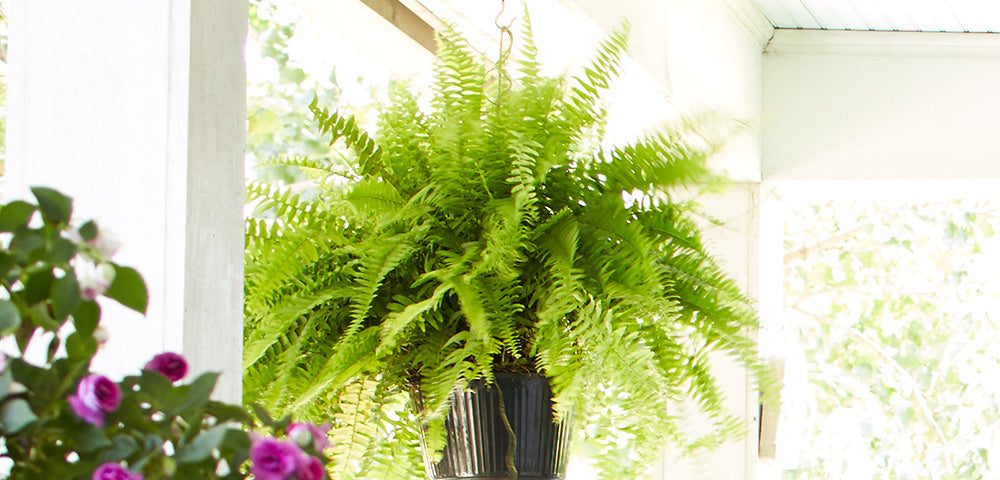Boston Fern (Nephrolepis exaltata)
Boston Fern Plant Features
For over a hundred years, Boston ferns have played a starring role inside and out of America homes. This voluptuous, easy-care, fern grows just as well on porches and patios as it does gracing your front hall or living room. Boston ferns graceful produce arching branches covered with soft, emerald-green fronds.One reason that Boston fern is so popular is that it has a classic look that goes well with any architectural or decorating style, from lush and tropical to classical and elegant to comfy and bohemian. Hang some on your front porch and you're sure to notice the plants instantly make your home seem more welcoming.
Indoors, Boston ferns will also help remove toxins such as toluene and xylene from the air.
Boston Fern Questions?
Email us your questions and one of our fern-growing experts will get back to you!
Boston Fern Growing Instructions
Like other ferns, Boston fern is relatively easy to grow indoors or out if you're able to provide the right conditions.Growing Boston Fern as a Houseplant
Indoors as a houseplant, Boston fern appreciates medium to bright light. Keep it out of direct sun, especially during the afternoon hours. While the plant can tolerate low-ish light conditions, it does best where it casts a soft shadow much of the day.
Water Boston fern as the potting mix starts to dry to the touch. How much and often that is depends on a variety of factors, including temperature and relative humidity levels. It's best to probe the potting mix with your finger or a moisture meter to get a sense of whether your plant needs water.
Tip: The fronds will develop a dull cast and often look slightly blue green, rather than rich green, as it's starting to dry out.
Like most ferns, Boston fern appreciates abundant relative humidity levels. In arid climates or homes that use a lot of air conditioning or forced-air heating, the plant will usually benefit from being grown under a large cloche, in a display case, or other conditions where you can boost moisture levels in its atmosphere.
Keep Boston fern away from heating or air-conditioning vents. The hot or cold drafty air can cause the fronds to go brown and dry prematurely.
Growing Boston Fern Outdoors
Outdoors, Boston fern does best in a spot with partial to full shade. That usually means all-day shade or a spot that get some morning sun, but is shaded during the hot afternoon hours.
Water Boston fern as the potting mix starts to dry. In especially hot or windy weather, that may mean daily waterings. In cool weather, Boston fern uses less moisture and doesn't need watering as often. If it dries out too much, the fronds turn brown and crispy.
Outdoors, Boston ferns are winter hardy in Zones 10-12.
Get more tips for buying and growing Boston fern!
Please note: Boston fern is not intended for human or animal consumption
-
Water
Medium water needs
-
Light
Indoors: Medium light
-
Colors
Green
-
Special Features
Purifies the air
Super-easy to grow
Q&A
My Boston ferns often develop yellow leaflets that litter the floor. How can I stop them from doing that?Boston ferns grow best in a humid atmosphere so mist them frequently to hydrate the foliage. Also, keep them away from heat ducts or radiators that might dry them out. And, keep the soil just slightly moist at all times. Boston ferns don't like to sit in water, but don't like to dry out completely either.

